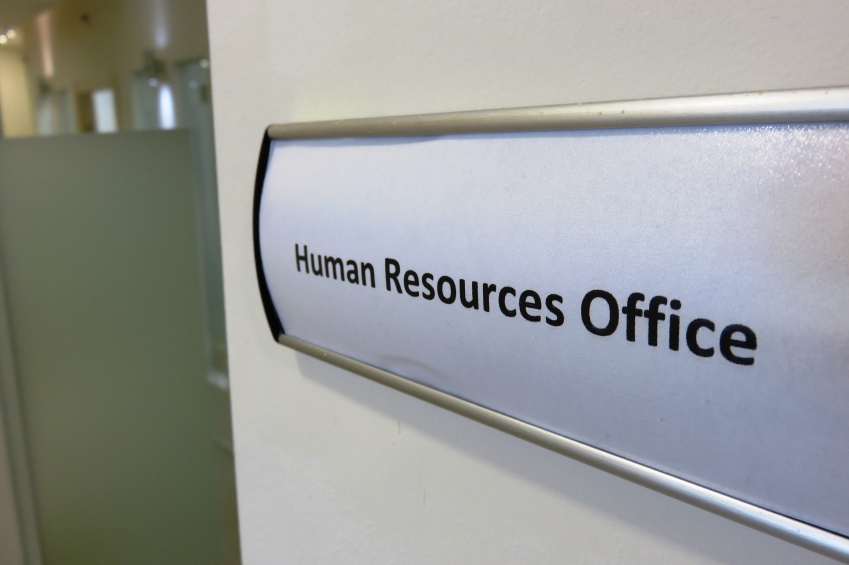As a property and casualty agent, you think about risk.
Day in and day out, you’re focused on the various threats that your clients face and what you can do to help them avoid these risks.
Insurance agents keep on top of these threats by making sure they are aware of the latest regulatory and industry trends and switched on to the insurance products that will protect their clients’ businesses. But there’s one huge risk management factor that might have evaded your business radar screen: good HR practices.
At its core, an effective, comprehensive HR program is risk management. As such, you need to talk to your clients about it. Even better, cement your relationships by providing them with the knowledge, tools and support they need to help them strengthen their HR capabilities and reduce their risk exposure.
When we talk about good HR as risk management, it’s not only about reducing Workers' Compensation or Employment Practices Liability Insurance claims.
A good agent provides risk management solutions to help clients solve real problems. A great agent also offers insights into how clients can make their businesses more successful. The correlation between business success and HR success is undeniable. Attracting, hiring and retaining great employees are at the core of every manager’s job.
Many studies show that the biggest reason that employees leave jobs is because of bad management and the resulting culture and morale issues. And, we all know that when employees are considering leaving companies that’s when claims happen. Regardless of whether claims happen or not, high employee turnover typically equals low productivity and high stress. It’s why a hot technology company such as Jet.com has emphasized worker happiness above everything else.
We all instinctively know that keeping top-performing employees makes good business sense, but what we often fail to recognize are the substantial risks of not doing so.
High turnover rates hurt company culture, which can lead to a demotivated workforce. Longstanding institutional knowledge is impossible to replace. And then there’s the actual hit to the bottom line.
According to the American Management Association, the costs to an organization of an employee leaving can range from 30% to a whopping 150% of the employee’s salary, totaling $11 billion lost annually in the United States.
Employees leave for all kinds of reasons, but too many abandon jobs because of poor HR practices, including not hiring the right people in the first place. According to the Harvard Business Review, 80% of employee turnover is because of bad hiring decisions. Too many companies also fail to properly train new employees. The SHRM Foundation has reported that 35% of companies spend nothing on training new employees.
And then there’s what goes on in the course of an actual workday.
Continue reading ...

Periodically check in with your clients about their HR programs and provide relevant HR information that keeps you in the risk management conversation. (Photo: iStock)
Providing employees with clear goals and objectives and ongoing training to develop their careers is necessary and something that should be occurring on a daily basis. Additionally, providing a safe and healthy work environment free from harassment, bullying and discrimination is a responsibility of the HR department, strongly supported by senior management.
Companies face significant and potentially very costly risks if these problems are not appropriately addressed. The Workplace Bullying Institute reports that 48% of American adults have reported experiencing workplace bullying. Needless to say, when an employee has to put up with bullying on the job, it is highly likely they will file a lawsuit through the Equal Employment Opportunity Commission. Consequently, the chances of him or her remaining at that organization are greatly diminished. Effective HR practices play a critical role in helping companies to mitigate and avoid those kinds of serious workplace problems.
So, how can you turn these HR challenges and risks into opportunities to strengthen your value to existing clients as well as prospects?
- Start with a conversation. Just as you may not have considered the correlation between best HR practices and risk management, your client may not have either. Start with a conversation to bring it to the attention of your clients and prospects. This is especially important if your client is a chief financial officer or small to medium-size company owner, who may not have considered the connection between good HR and risk management. Reminding him or her that HR is a substantial element of their risk profile is an important first step.
- Make it tangible. For many clients, the concept of “good HR” can feel ambiguous and hard to wrap their arms around. What every company will respond to, however, are hard hits to the bottom line. Come to any conversation armed with facts on the financial repercussions of ignoring HR needs and associated risks. One that is particularly valuable is the cost of lawsuits. Workplace discrimination lawsuits alone cost U.S. businesses an estimated $64 billion annually. HR trainings on workplace behavior coupled with good management practices and trained managers can go a long way towards mitigating that risk. And, these steps are obviously a fraction of the cost of legal fees resulting from a lawsuit. Putting this into financial terms will make this concept clearer and more actionable for your clients and prospects.
- Be a resource. For small and mid-size companies, the executive who manages HR can also be the president/owner, office manager or finance person, none of whom necessarily have specific HR expertise. The best insurance professionals are those who not only sell insurance, but act as advisers and provide expert resources for their clients. To help them manage their HR risks, offer to provide expert HR resources, such as compliance trainings and trusted knowledge and advice. The more you can help your clients solve their full range of risk related issues and other business problems, the more you cement your relationship with them.
- Follow-up. Don’t just have one HR-related conversation and then leave it at that. Continue to check in with your clients about how their HR programs are going and provide a steady stream of relevant HR information that keeps their risks and opportunities front of mind and keeps you in the risk management conversation.
Remember, there is a direct connection between successful business and effective HR. Empowering your clients and prospects to implement good HR practices will not only help to mitigate their HR risks and grow their business but also strengthen the value of your relationship.
Pete Yozzo is the founder and CEO of Pleasanton, Calif.-based human resources knowledge solutions and learning company, ThinkHR.
Are you following us on Facebook?
Want to continue reading?
Become a Free PropertyCasualty360 Digital Reader
Your access to unlimited PropertyCasualty360 content isn’t changing.
Once you are an ALM digital member, you’ll receive:
- Breaking insurance news and analysis, on-site and via our newsletters and custom alerts
- Weekly Insurance Speak podcast featuring exclusive interviews with industry leaders
- Educational webcasts, white papers, and ebooks from industry thought leaders
- Critical converage of the employee benefits and financial advisory markets on our other ALM sites, BenefitsPRO and ThinkAdvisor
Already have an account? Sign In Now
© 2024 ALM Global, LLC, All Rights Reserved. Request academic re-use from www.copyright.com. All other uses, submit a request to [email protected]. For more information visit Asset & Logo Licensing.








